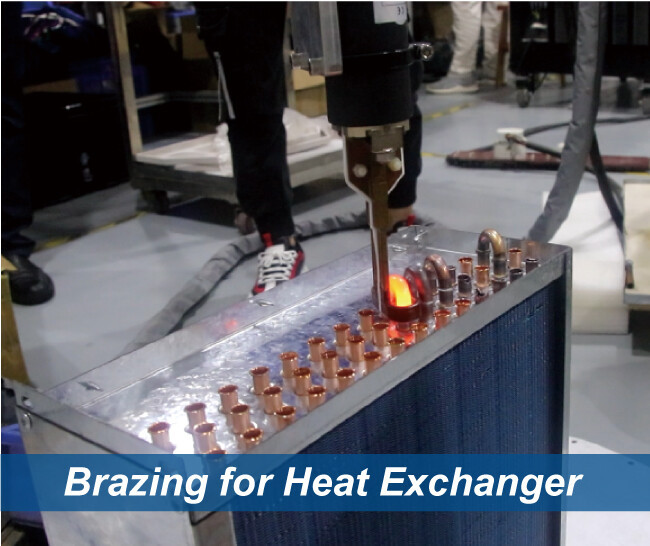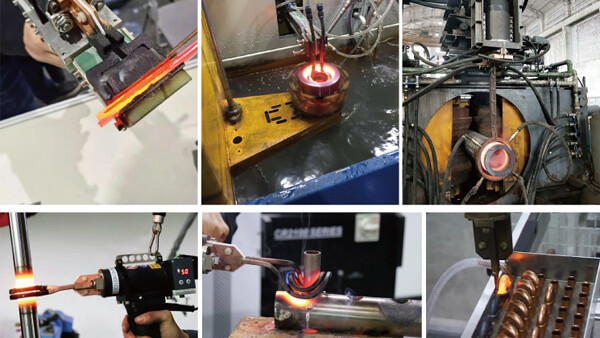
News
Have you ever wondered how industries achieve precise and efficient heating for metals and other materials? An IGBT induction heating machine might be the answer. These machines are game-changers in manufacturing, offering enhanced energy efficiency and better process control. However, they come with challenges like high upfront costs and a need for skilled operators. Understanding these aspects can help you decide if this technology fits your needs.
Key Takeaways
IGBT induction heating machines are over 90% energy efficient. They help save money and lower harm to the environment.
These machines heat evenly and accurately, giving great results. They are used in fields like car making and airplanes.
The starting cost is high, but they save money later. They also boost work output, making them useful for many industries.

Understanding IGBT Induction Heating Machines
What Is an IGBT Induction Heating Machine?
An IGBT induction heating machine is a cutting-edge device that uses Insulated Gate Bipolar Transistor (IGBT) technology to generate heat through electromagnetic induction. This machine is designed for high-frequency heating applications, making it ideal for industries that require precision and efficiency. Unlike traditional heating methods, it doesn’t rely on direct contact or open flames. Instead, it uses electromagnetic fields to heat materials from within.
These machines are built with advanced components like Infineon IGBTs and MOSFETs, which ensure fast heating speeds and energy efficiency. They can operate continuously for 24 hours, making them reliable for demanding industrial tasks. Plus, they meet global standards with certifications like CE and ISO9001, ensuring quality and safety.
How IGBT Technology Powers Induction Heat Treatment
IGBT technology plays a crucial role in powering induction heat treatment processes. It enables high-frequency switching, which is essential for generating the electromagnetic fields needed for heating. With IGBTs rated for at least 400 V and capable of handling large power levels, these machines achieve efficiency rates exceeding 90%. This means you can save on energy costs while reducing your environmental impact.
The precision control offered by IGBT technology is another game-changer. You can achieve uniform heating, which is critical for processes like hardening and brazing. This level of control not only improves product quality but also aligns with sustainability goals by minimizing waste and energy consumption.
Key Applications of IGBT Induction Heating Machines
IGBT induction heating machines are incredibly versatile, finding applications across various industries. In the automotive sector, they’re used for hardening components, ensuring durability and safety. Aerospace companies rely on them for brazing and annealing lightweight materials, which require uniform heating to maintain quality.
In electronics, these machines excel in soldering and component assembly, offering rapid heating and cooling cycles that boost production efficiency. Even the food industry benefits from their use in cooking and pasteurization processes, ensuring even heating and improved food safety.

Benefits of IGBT Induction Heating Machines
Energy Efficiency and Minimal Heat Loss
One of the biggest advantages of an IGBT induction heating machine is its energy efficiency. These machines can achieve efficiency rates of over 90%, which is a significant improvement compared to traditional heating methods. This means you can save on energy costs while reducing heat loss during the process. For example, in the automotive industry, induction heat treatment processes like hardening and tempering benefit from precise temperature control. The rapid heating capabilities of IGBT systems ensure minimal energy waste while achieving the desired material properties.
With advancements in IGBT technology, you also get better process control. This optimization reduces waste and ensures that energy is used only where it’s needed. If you’re looking to cut down on operational costs and environmental impact, this technology is a game-changer.
Precision and Uniform Heating
IGBT induction heating machines excel at delivering precise and uniform heating. This is crucial for processes like induction heat treatment, where even a slight temperature variation can affect the quality of the final product. The technology allows you to control the heating process with pinpoint accuracy, ensuring consistent results every time.
Whether you’re hardening metal components or brazing lightweight materials, these machines provide the precision you need. Uniform heating also minimizes the risk of defects, which means less waste and higher-quality products. It’s a win-win for both efficiency and reliability.
Versatility in Industrial Applications
These machines are incredibly versatile, making them suitable for a wide range of industries. From automotive to aerospace, electronics, and even food processing, the applications are endless. For instance, in electronics manufacturing, induction heat treatment is used for soldering and component assembly. The rapid heating and cooling cycles improve production times and energy efficiency.
This flexibility makes IGBT induction heating machines a valuable investment for businesses looking to optimize their operations.
Environmental Advantages
If sustainability is a priority for you, IGBT induction heating machines are a great choice. Studies show that these machines can achieve energy efficiencies of up to 90%, far surpassing the 60% efficiency of conventional heating methods. This not only reduces operational costs but also lowers carbon emissions, helping you align with global sustainability goals.
What’s more, these machines can integrate with renewable energy sources, further enhancing their environmental benefits. By reducing reliance on fossil fuels, they promote energy independence and contribute to a greener future. If you’re aiming to minimize your environmental footprint, this technology is a step in the right direction.
Challenges of IGBT Induction Heating Machines
High Initial Investment Costs
One of the biggest hurdles you might face with IGBT induction heating machines is their high upfront cost. These machines use advanced components like IGBTs and precision-engineered induction coils, which drive up the price. For small or medium-sized businesses, this can feel like a significant financial burden. However, it’s worth noting that the energy savings and efficiency these machines offer can offset the initial expense over time. If you’re planning to invest, it’s essential to weigh the long-term benefits against the upfront costs.
Operational Complexity and Maintenance
Operating an IGBT induction heating machine isn’t as straightforward as flipping a switch. These machines require precise calibration and monitoring to ensure optimal performance. You’ll need to understand how to adjust parameters like frequency and power levels for different applications. Maintenance can also be tricky. Components like induction coils and cooling systems need regular checks to prevent breakdowns. If you’re not prepared for this level of complexity, it could lead to downtime and increased operational costs.
Material and Design Constraints
The materials and design of IGBT induction heating machines come with their own set of challenges. For instance, lightweight and heat-resistant materials like ceramics and composites are essential for durability and efficient heat distribution. The design of the induction coil also plays a critical role. Multi-turn and helical configurations improve magnetic field distribution, but they must be customized for specific applications. Here’s a quick look at some common constraints:
These constraints mean you’ll need to carefully plan and design your system to meet your specific needs.
Need for Skilled Operators
IGBT induction heating machines aren’t plug-and-play devices. You’ll need skilled operators who understand the technology and can handle its complexities. Training your team or hiring experienced professionals is essential. Without the right expertise, you risk inefficient operation, higher energy consumption, and even damage to the machine. While this might seem like a disadvantage, investing in skilled personnel can significantly improve your machine’s performance and lifespan.
Comparing IGBT Induction Heating Machines to Other Technologies
IGBT vs. Resistance Heating
When comparing IGBT induction heating machines to resistance heating systems, the differences are striking. Resistance heating relies on electrical resistance to generate heat, which often results in lower energy efficiency. In contrast, IGBT induction heating machines achieve up to 90% energy efficiency. This means you save more energy and reduce operational costs.
Take a look at this comparison:
With IGBT technology, you also get precise temperature control and faster heating cycles. Resistance heating, on the other hand, struggles with uniformity and speed. If you’re aiming for efficiency and sustainability, IGBT machines clearly outperform resistance systems.
IGBT vs. Gas-Fired Heating Systems
Gas-fired heating systems have been a staple in industries for years, but they come with limitations. They consume large amounts of energy and produce significant emissions. IGBT induction heating machines, however, offer a cleaner and more efficient alternative. They provide precise temperature control and rapid heating, which reduces energy waste.
For example, in metal processing, IGBT systems are replacing gas-fired furnaces. Their ability to heat materials quickly and uniformly improves product quality while lowering energy consumption. If you’re in the automotive or aerospace industry, this shift can help you meet sustainability goals and enhance productivity.
IGBT vs. Other Induction Heating Technologies
Not all induction heating technologies are created equal. IGBT induction heating machines stand out due to their advanced materials and high-frequency capabilities. These machines use high-temperature-resistant components, which improve durability and heat distribution. This makes them more reliable for demanding applications.
Additionally, IGBT systems operate at higher frequencies, allowing for faster and more precise heating. This reduces energy consumption and minimizes heat loss. If you’re looking for cutting-edge performance, IGBT technology offers a clear advantage over traditional induction heating methods.
Choosing an IGBT induction heating machine offers you incredible benefits like energy efficiency, precision, and versatility. These machines achieve over 90% efficiency, saving costs and reducing environmental impact. However, challenges like high initial costs and the need for skilled operators require careful planning.
Tip: Evaluate your industry’s specific needs to make the best decision.
FAQ
What industries benefit the most from IGBT induction heating machines?
Industries like automotive, aerospace, electronics, and food processing gain the most. These machines offer precise, efficient heating for hardening, brazing, soldering, and pasteurization.
How do IGBT induction heating machines save energy?
They achieve over 90% energy efficiency by focusing heat directly on materials. This reduces waste and lowers energy consumption compared to traditional methods.
Are IGBT induction heating machines environmentally friendly?
Yes! They reduce carbon emissions and can integrate with renewable energy sources. This makes them a sustainable choice for industries aiming to go green.
Please give us a message
